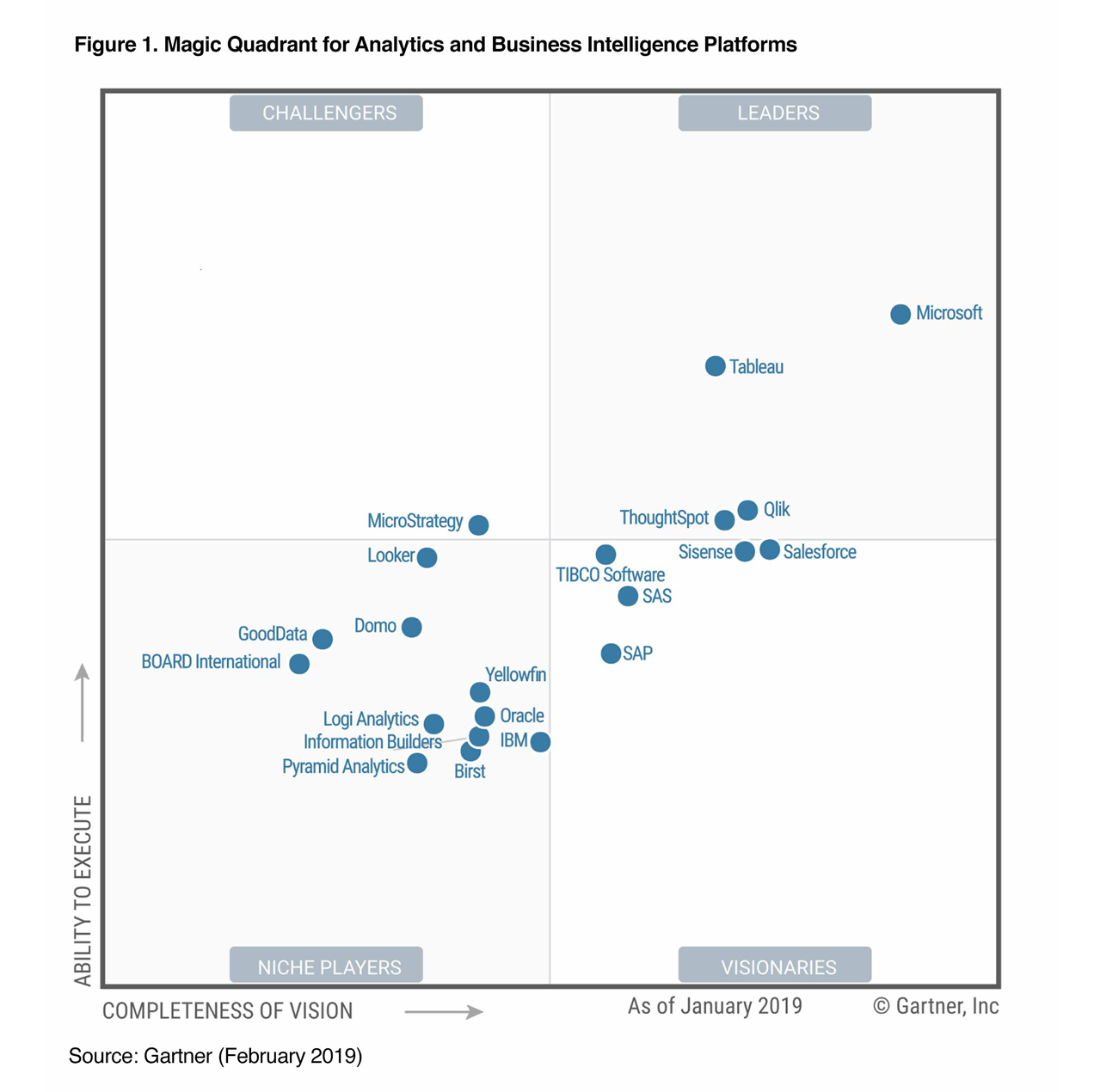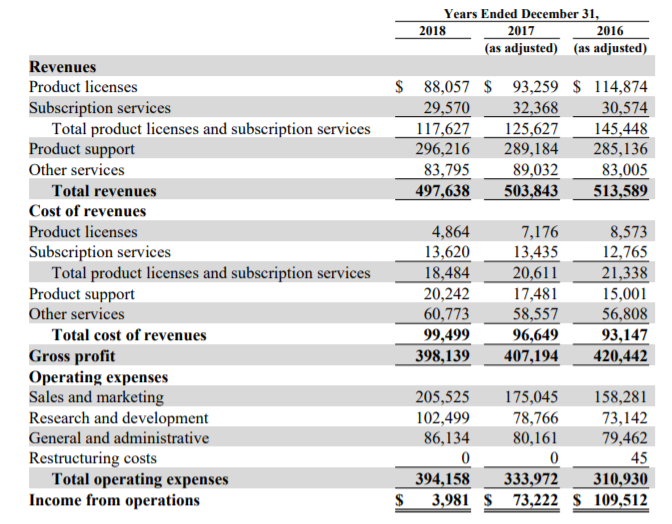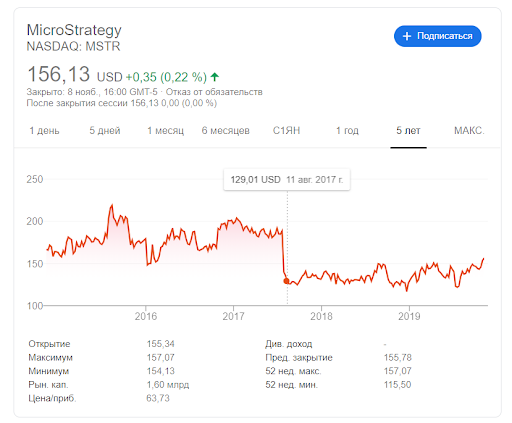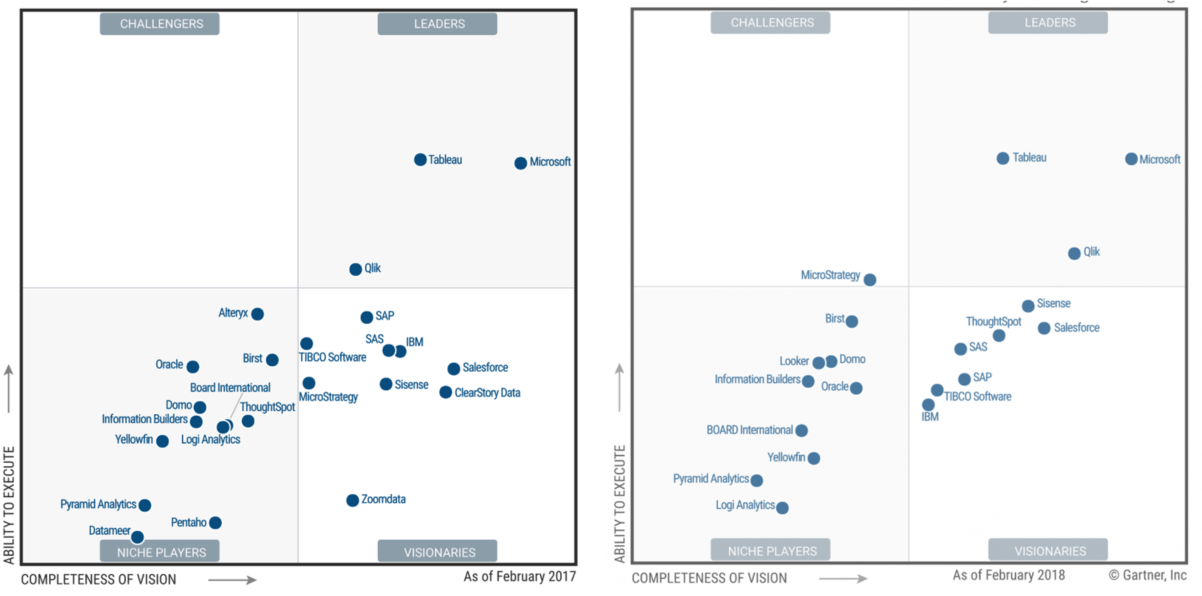Having been engaged in BI since 2013, I have come across a rather interesting and long way in this business. At the start of my career, it was a dynamic market, many did not understand what kind of tools they were and why they were needed, but everyone was impressed by the visual component of the products. Since then, new products have appeared, an understanding has come of how to correctly and efficiently use BI tools, in my opinion, the market has become narrow and boring.
What BI Market Needs to Grow
Now the most famous products on the BI market: Qlik, Power BI, Tableau. When I read the next TOR for the creation of a corporate BI system, I immediately understand the apologist of which product wrote it. There is a lack of fresh ideas on the market.
In 2018, Gartner, a well-known consulting company focused on research in IT,
said that BI will soon change and become AI (Augmented Intelligence) - this tool will solve a wider range of tasks. However, for the period of augmented analytics to come, companies will have to work hard in such areas as:
- Integration with cloud services, which is generally mainstream in the modern IT world;
- The introduction of ML and AI (Artificial intelligence) into their products, which have also already entered our lives and their penetration will continue;
- Further development of approaches to democratization of data, for example: NLP (natural language processing) which will allow users to communicate with a systemic, practically human language;
- Development of own bots capable of perceiving both text and voice requests.
Let's try to evaluate how correct the conclusions of the consulting company are after considering the events of 2019.
Analysis of the most important BI transactions 2019
Before moving on to the events of the 2019 market, I would like to recall the events of 2007 and such transactions for the acquisition of BI products as: SAP - Business Objects, IBM - Cognos, Oracle - Hyperion. Perhaps these events can be called the first wave of absorption of BI companies by larger software manufacturers.
In 2019, the state of affairs in the BI market can be characterized by three high-profile deals. The most expensive of these is Salesforce’s acquisition of the Tableau analytics platform for $ 15.7 billion. A smaller deal occurred between Google and Looker. And of course, one cannot fail to note the acquisition by Qlik - the big date of the Attunity platform.
Considering each transaction separately, I want to note:
- Salesforce acquired Tableau for integration with the Einstein platform. The motive for the acquisition is: “Combining a top-end CRM system with a top-end analytic product will help customers accelerate the process of digital transformation.”
- Google acquired Looker for $ 2.6 billion. Looker is expected to expand the “Google's Smart Analytics Platform” in terms of visualization. This product will allow everyone, not only professional data analysts, to analyze data and find insights. Will make the process of researching data accessible, understandable and intuitive.
- And finally, the most interesting, in my opinion, acquisition of Qlik - Attunity . In February 2019, Qlik acquired Attunity for approximately $ 560 million. As I have already said, this transaction is interesting not by the amount, but by the composition of the participants. The case when not BI brand is acquired, but BI vendor acquires a big date company. Having studied the press releases of the parties to the transaction, we can say. Qlik is gaining access to proven cloud technology, real-time data processing technology, technology and experience creating Data Lake. The indicated opportunities will allow more successful use of predictive analytics and artificial intelligence.
As you can see, the three major transactions of 2019 make at least three things in common, which, incidentally, confirms the conclusions of Gartner:
- Approaching Big Date;
- Emphasis on the use of artificial intelligence and machine learning;
- Cloud use case.
The fourth unifying point could be the presence of a gigantic amount of data accumulated over the years of existence. But we can speak about the availability of this data with a fair amount of certainty in only two of three cases - Salesforce and Google. Of course, neither Salesforce nor Google will sell their customer data to their competitors, but no one will prohibit the provision of impersonal analytics by industry. And, for example, knowing the sales trends of certain categories of goods in relation to geography is worth a lot. And of course, the presence of a certain array of information can significantly improve the accuracy of ML models.
All these events, although spaced in time, however, demonstrate that the most effective use of the BI tool is achieved in synergy with other products.
Gartner Quadrant Review
It is time to return to Gartner's predictions and look at his magic quadrant:

Looking at him in 2019, we see the only independent player among the leaders - the company ThoughtSpot, a company founded by a native of Google and specializing in voice-driven analytics, fell into the quadrant for its ability to quickly attract corporate customers. The other three companies are Microsoft (Power BI), Tableau, Qlik (QlikView, Qlik Sense).
Qlik, of course, is also an independent player, but I consider it separately, based on the above. It turns out that the classic representatives of the BI industry, such as we knew it before, are generally not leaders.
There are two classic BI products in the quadrant - MicroStrategy and Sisense, located in the “challengers” and “visionaries” sections, respectively. Examining the finance
report of MicroStrategy, it becomes clear that the company is gradually losing its revenue for the third year in a row. In 2018, she sharply increased R&D expenses, thereby collapsing the amount of profit.
2018 Microstrategy Annual Report:

It should also be noted a sharp drop in shares in 2017 and the fact that at the moment their value has not returned to the level of 2017.
Dynamics of stock value:

According to Sisense, no similar information is publicly available.
In my opinion, the existence of these two companies is due only to the potential for their acquisition by some major player from the cloud industry. After all, do not forget that until such a powerful player as AWS (Amazon) has joined the party - the cloud technology provider is steadily one of the three leaders, judging by the logic of the behavior of competitors, he also has to buy something. Perhaps it will be one of the “challengers” or “visionaries”, or maybe in the bowels of the giant a new BI tool is created, developed by “in-house”.
Conclusions: the future of BI products.
Looking at the Gartner quadrants for 2017 and 2018, we see the following picture:

The leaders are the same companies: Qlik, Microsoft, Tableau.
Based on the analysis of quadrants, as well as the financial report of Microstrategy (the only classical BI vendor being a public company), it can be stated that the world market of classical BI instruments is stable, and it has largely exhausted the upward trend.
The driver for the development of BI products is now a comprehensive offer, which includes: the ability to work with significant amounts of information, cloud infrastructure and cloud computing, as well as the availability of artificial intelligence and machine learning tools.
In the same direction, the giant database manufacturers ORACLE and Microsoft are also moving. All, without exception, the services they offer can be found in the cloud. They have done tremendous work on the introduction of machine learning models, created libraries of these models, which are also accessible to users, implemented convenient interfaces that allow you to select models and set dates, train and schedule execution time.
Clouds and AI are advancing (at least in the markets of Western countries), this is a fact that can be argued about, but the tendency and behavior of vendors confidently confirm this.